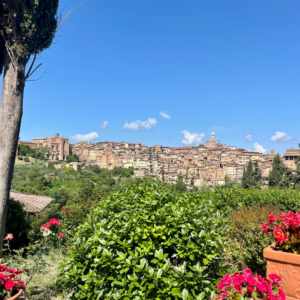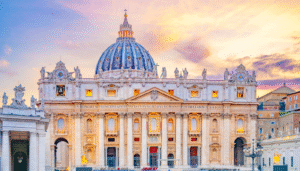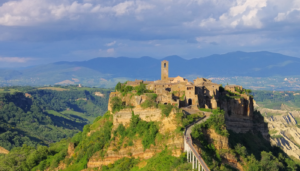Siena, a captivating city in the heart of Tuscany, Italy, is known for its rich history, dramatic medieval architecture, and vibrant culture.
One of the most intriguing aspects of Siena’s identity lies in its contrade. These 17 districts or neighborhoods, each with their own distinctive character, traditions, and symbols, form the beating heart of the city (scroll down for a full list)! Let’s explore the enchanting world of Siena’s contrade and discover the deep-rooted sense of tradition, community, and rivalry that make them truly extraordinary.
 Origins and Symbols: The Historical Tapestry Unveiled
Origins and Symbols: The Historical Tapestry Unveiled
Centuries ago, the contrade were established as distinct districts within the city walls of Siena. Each contrada bears a unique name and is represented by an animal or mythical creature, etched into its emblematic symbol. From the majestic Eagle (aquila) to the resilient Snail (chiocciola) and the graceful Wave (onda), the symbols embody the essence and identity of each contrada.
Rivalries and Competitions: Palio di Siena
The Palio di Siena, a world-famous bareback horse race held twice a year in the iconic Piazza del Campo, is the pinnacle of contrada rivalries. During this adrenaline-fueled event, contrade compete fiercely for honor, glory, and the esteemed Palio banner. Historical feuds, alliances, and strategic tactics shape the thrilling spectacle, evoking a sense of passion and excitement that resonates through the cobbled streets.
 Community and Festivities: Bonds That Transcend Generations
Community and Festivities: Bonds That Transcend Generations
The contrade are more than mere divisions of the city; they are extended families. The people of each contrada actively participate in a myriad of community activities, fostering a strong sense of belonging. Traditional dinners, processions adorned with vivid flags, and symbolic ceremonies create a tapestry of festivities that celebrate the contrada’s heritage throughout the year. These gatherings provide opportunities to strengthen bonds and pass down traditions from one generation to the next.
 Contrada Museums & History: A Glimpse into the Past
Contrada Museums & History: A Glimpse into the Past
Immerse yourself in the captivating history of the Contradas by visiting their dedicated museums. Each contrada showcases its rich heritage through historical artifacts, costumes, and memorabilia. Explore the rooms filled with ancient treasures, soak in the stories of triumphs and challenges, and gain a deeper understanding of the contrada’s role in shaping Siena’s cultural tapestry.
 Contrada Chapels & Churches: Devotion and Faith
Contrada Chapels & Churches: Devotion and Faith
In addition to their emblematic symbols, many contrade have their own chapels or churches, each dedicated to their patron saints. Step inside these sacred spaces adorned with exquisite artwork, intricate sculptures, and religious icons. These spiritual havens reflect the contrada’s devotion and offer moments of serenity and reflection amidst the vibrant cityscape.
 Participation & Membership: A Sense of Belonging
Participation & Membership: A Sense of Belonging
Membership in a contrada is usually determined by birth or marriage, as individuals inherit their affiliation from their parents. However, it is possible to become a member of a contrada through a formal process known as “incorporation.” This allows individuals from outside Siena to join a district and become active participants in its activities.
As you wander through the historic streets of Siena, take the time to immerse yourself in the enchanting world of its contrade. Feel the pulse of community spirit, witness the fervor of rivalry, and embrace the captivating stories that have shaped these neighborhoods for centuries. Don’t forget to pick up a souvenir from your favorite contrada next time you visit!
Check out the full list here!
-
- Aquila (Eagle)
-
- Bruco (Caterpillar)
-
- Chiocciola (Snail)
-
- Civetta (Little Owl)
-
- Drago (Dragon)
-
- Giraffa (Giraffe)
-
- Istrice (Crested Porcupine)
-
- Leocorno (Unicorn)
-
- Lupa (She-Wolf)
-
- Nicchio (Shell)
-
- Oca (Goose)
-
- Onda (Wave)
-
- Pantera (Panther)
-
- Selva (Forest)
-
- Tartuca (Tortoise)
-
- Torre (Tower)
-
- Valdimontone (Valley of the Ram)





